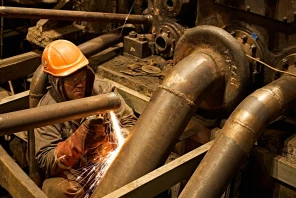The topic of climate change has been globally discussed for years. Its impact affects every part of human life, including even deaths due to rising temperatures around the world. Reaching net-zero emissions has emerged as a solution, driving individuals and companies to minimise the effects of climate change.
In this article, we will break down net-zero and how it can help keep our planet liveable and sustainable.
What does net-zero emissions mean?
Net-zero emissions is an achievable balance of emissions released into the atmosphere and emissions removed or avoided. This idea is the key to battling climate change and lies in managing and minimising the amount of greenhouse gases produced by humans.
These limits are mostly applied to businesses and enterprises and encompass the net-zero carbon emissions initiatives, such as the Paris Agreement, the 2030 Climate Target Plan, and the Net Zero Cities. The aim is to limit human impact on global warming by ensuring that all commercial operations adhere to good sustainability practices.
Why is net-zero important?
A key aspect of the "net-zero emissions" discussion is understanding why this initiative is so important. It’s not just one of our environmental goals – it’s an essential part of our sustainable future. Greenhouse gases like carbon dioxide trap heat in our atmosphere. Unless we adhere to sustainability principles, global temperatures could rise tremendously, causing countless natural disasters, such as:
- wildfires;
- floodings;
- storms;
- heavy rainfall;
- droughts.
Thus, the net-zero emission programs around the world aim to stop global warming and preserve the low carbon future by limiting it below 2 degrees Celsius above pre-industrial levels and maintaining it at 1.5 degrees Celsius, according to the Paris Agreement.
Key strategies to achieve net-zero carbon emissions
Now that we have clarified the net-zero emissions meaning, we can explore how humans can stop and possibly reverse global warming. Below, you will find key strategies businesses can adhere to achieve the global goal.
Renewable energy transition
Using fewer non-renewables and moving on to green energy is the first step to mitigating global warming. Solar, wind, hydroelectric, and geothermal power sources are the essentials in the renewable energy transition - they do not emit any greenhouse gases and can easily replace fossil fuels. So, they are a great tool to stop climate change.
Carbon capture and storage
Carbon capture and storage is not a new process, but adapting it to be broader can help us conserve our planet. Also called CCS, it’s the process of CO2 separation during industrial production. Instead of being released into the atmosphere, it is transported to another location and stored there for possible reuse.
About 80% of the global CO2 separated is then used for enhanced oil recovery, or EOR. EOR aids in oil extraction, turning CCS into CCUS, or carbon capture, utilisation, and storage.
Sustainable transportation
When you ask a search engine to define net-zero emissions, you will most likely find a lot of information about green transport. Indeed, carbon emissions from transportation contribute a lot to global warming. In 2023, it resulted in 1.86 billion metric tons of carbon dioxide emissions. So, finding better, sustainable options for transportation is crucial for net-zero. These are:
- electric vehicles;
- electric buses;
- electric vehicle charging stations;
- fleet electrification.
Innovation plays a huge role in this shift. Replacing fossil-fuel-powered systems with zero-emission strategies is one of the cornerstones of net-zero.
Circular economy and waste reduction
The production, use, and waste disposal of steel, plastic, and other materials account for almost a quarter of global CO2 emissions. So, reducing and reusing waste is a great way to contribute to net-zero emissions by 2050. The circular economy, in particular, is an approach that could optimise this process.
Adding these materials to new products, increasing the overall lifetime of vehicles and buildings, and reusing the old materials for production could minimise the demand for new production and reduce its effects on the environment.
Global net-zero targets and timelines
The main target of achieving net-zero emissions is to limit the global temperature increase to 1.5°C above pre-industrial levels. Only then do we have a chance of preserving our planet and keeping it liveable for the next generations. Right now, the planet is 1.2°C warmer than it was in the late 1800s. The limit was set during the Paris Agreement on 12 December 2015. To adhere to it, we have to reduce emissions by 45% by 2030 and reach net-zero emissions by 2050.
In March 2022, UN Secretary-General António Guterres established a High-Level Expert Group on the Net-Zero Emissions Commitments of Non-State Entities to create more straightforward rules and standards for the net-zero global emissions initiative.
In June 2024, 107 countries responsible for global emissions joined the official pledge. Laws, policy documents, and official announcements have been implemented. Additionally, more than 9,000 companies, over 1,000 cities, more than 1,000 educational establishments, and over 600 financial institutions decided to take immediate action. This initiative is called the Race to Zero.
Frequently asked questions
- How can individuals contribute to net-zero?
Using more public transport instead of driving cars or taking taxis is a great first step. You can also invest in an electric vehicle if possible. Power your home more efficiently and use solar power. Instead of throwing away clothes and other items, fix or recycle them.
- What are the main industries driving net-zero?
Cement and concrete, iron and steel, oil and gas, chemicals, and coal mining are the five main industries contributing to industrial emissions. They have to change their approach so we can reach net-zero 2050.
- How is net-zero different from carbon neutrality?
The benefits of net-zero carbon emissions and general net-zero are the same. Yet, carbon neutrality focuses on CO2 reduction, while the latter motivates change across all industries.







